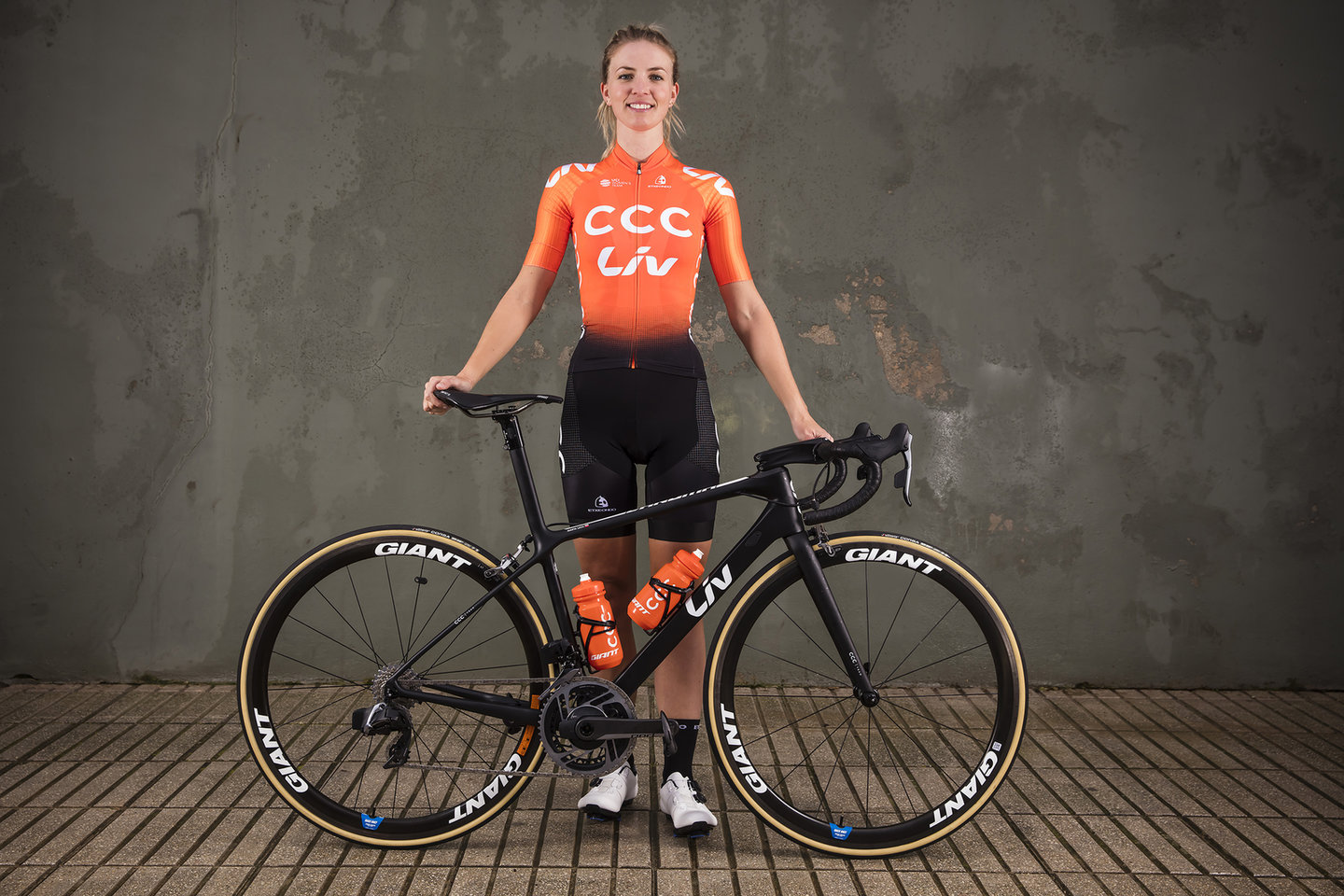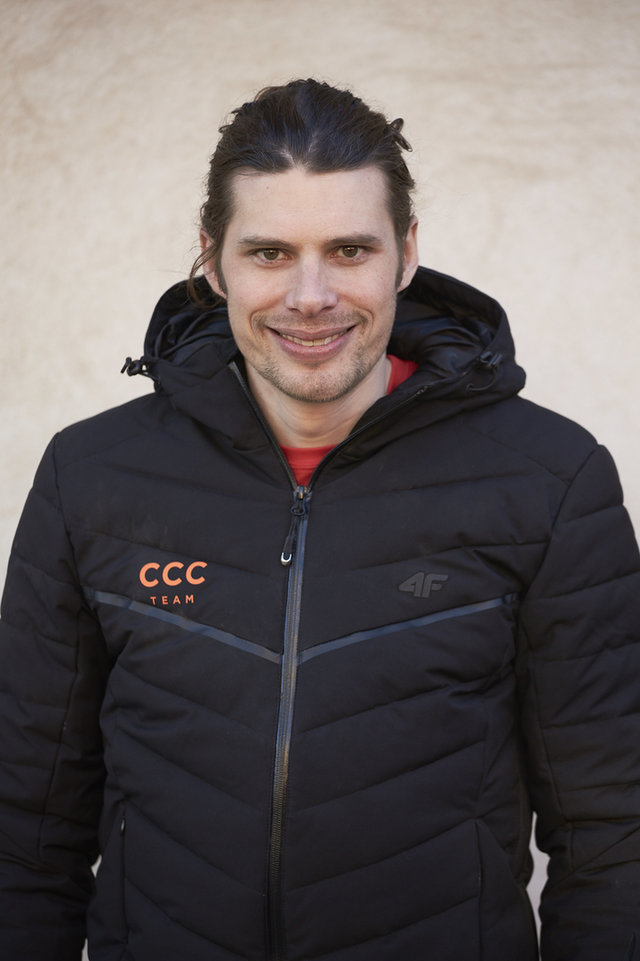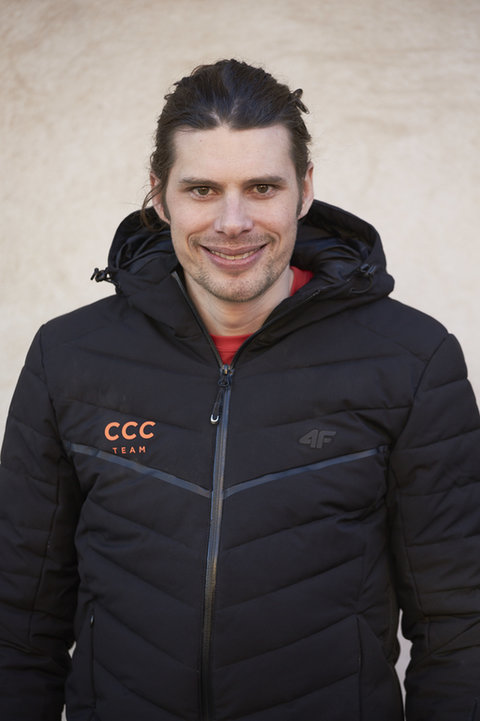Equipment

Specifications
• Frame: Liv Langma (road)
Brava (cyclocross)
Trinity Advanced (time trial)
• Wheels: Giant SLR0 Tubular
• Derailleur (front): SRAM RED eTap AXS
• Derailleur (rear): SRAM RED eTap AXS
• Shifters: SRAM RED eTap AXS HRD
• Bottom bracket: CEMA Ceramic
• Cassette: SRAM RED XG-1290 10-28
• Crankset: SRAM RED eTap AXS
• Bottle cages: Tacx
• Stem: Liv SLR Flux
• Handlebars: Giant Contact SLR
• Tape: Giant contact SLR
• Saddle: Liv Forward contact SL
• Power meter: SRAM RED AXS
• Computer: Giant NeosTrack GPS
• Sensor: New RideSense ANT+ & BLE Sensor
• Tyres: Vittoria Corsa (race)
Giant Gavia Race 0 (training)
• Seatpost: Giant ISP system (integrated)
• Chain: SRAM RED
• Brakes: SRAM RED eTap AXS HRD
• Pedals: Shimano Dura-Ace

Because every watt counts
Hidde Bekhuis
Hidde Bekhuis has been a performance manager at CCC-Liv since last winter. He is involved in the equipment and training aspects, enabling riders to be more successful in races. “This group has a lot of potential to take big steps forward.”
READ MORE
“At this level, every detail counts. That is why we chose CEMA for bottom brackets and derailleur wheels with ceramic bearings. These have a lower rolling resistance so that all these parts run lighter. With the same wattage, our Liv bikes go slightly faster. That is what really counts.”

Because every watt counts
Hidde Bekhuis
Hidde Bekhuis has been a performance manager at CCC-Liv since last winter. He is involved in the equipment and training aspects, enabling riders to be more successful in races. “This group has a lot of potential to take big steps forward.”
What are your tasks as a performance manager?
“The work is rather broad. The most important thing is to create the conditions in such a way that the team can win. That means that the equipment must be at its finest and the riders must be able to physically perform to the best of their ability. But it is still sports, we cannot calculate everything in advance and say: if we do it like that, we have guaranteed success. You do not win races at the drawing board.”
What is typical for your approach?
“I am and remain a scientist, so there must be evidence for the approach that we follow. In sport research, we are used to working with small numbers of athletes. So you must be careful when drawing general conclusions. One certain approach is not necessarily applicable to all our riders. It needs to be customised, we look very closely at the individual. Whatever we do, we always look for a scientifically-based foundation.”
What do you notice physiologically?
“We have made a profile of every rider using physical tests: what are they good at and what can be improved? Provided: all riders perform well above average. They are mostly young riders and with a specific training the top is certainly achievable. We know from top riders that their maximum performance corresponds to an Anaerobic Threshold Power of about 5.8 watts per kilogram of body weight. Most riders are not there yet. Looking at the physical possibilities now, Ashleigh Moolman Pasio stands out. Jeanne Korevaar also has a ‘big motor’. She pushes out excellent values, and that on the entire profile. Marianne Vos can spin really hard for a minute, incredibly. Using these profiles, trainers can adjust and optimise the training schedules. I monitor the progress across the entire width.”
What can CCC-Liv win at a technical level?
“Look at the Giro Rosa of last year. Ashleigh Moolman Pasio loses the Giro largely on the time trial. She has a big motor, as well as the winner Annemiek van Vleuten. By looking even more closely at the technology and implementing smart improvements, we can possibly make a half minute profit in her time trial. The complete set-up and adjustment of the bike must be correct: the right tires, parts, oil, you name it.”
How do you handle that?
“There is a complicated formula for how fast you can drive with a certain power. There are many things that affect this: air resistance, rolling resistance, mechanical resistance. When measuring, you can keep certain factors constant and adjust one thing. Then you measure which set-up is the fastest. CCC-Liv has selected a number of races in which they really want to be good. The Tour of Flanders is one of them. The riders will race there with a specific set-up that fits this particular race. The bike will be different than for example during the Ladies Tour.”
How do you find that right set-up?
“We work with, among other things, an aeropod, a pivot tube on the steering wheel with which the air resistance is measured. Furthermore, we have built a test set-up at Radboud University with whom we investigate which oils we can best work with. We test what is best with a number of hypotheses. Only after that, the riders come into the picture, then we go with them to the cobblestones: how do they like it? How do they feel? Riders must have faith in the bike which is the best according to calculations.”
What do you expect from the cooperation with CEMA Bearing?
“CEMA supplies us with parts with ceramic bearings that make our Liv bikes even more efficient. CEMA developed special hybrid ceramic bearings that are extremely suitable for our bikes. They have a lower rolling resistance and are therefore lighter than many standard products. You notice that difference in the wattage. We will be measuring exactly how big this advantage is in practice, but we are currently estimating it at 3 to 4 watts. In addition, we use derailleur wheels from CEMA, with a full ceramic bearing. This also provides an advantage: maybe just 1 watt, but together with the advantages of the other components, all those bits do indeed add value. If our riders in the Giro Rosa can daily deliver a few watts less to continue driving just as fast, it can play a decisive role in the last days of such a long stage race. For sure!”

